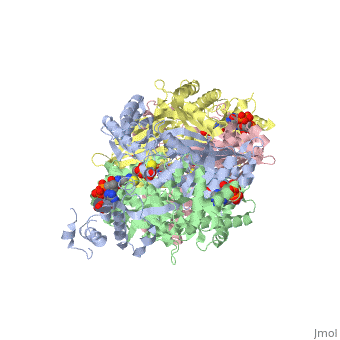Vibrio cholerae colonization factor TcpF: Difference between revisions
No edit summary |
No edit summary |
||
| Line 8: | Line 8: | ||
[[Image:3oc5 bio r 500.jpg|left|200px|thumb|Crystal Structure of the TcpF[[1xtc]]]] | [[Image:3oc5 bio r 500.jpg|left|200px|thumb|Crystal Structure of the TcpF[[1xtc]]]] | ||
==Your Heading Here (maybe something like 'Structure')==<StructureSection load='1dq8' size='500' side='right' caption='Structure of HMG-CoA reductase (PDB entry [[O395]])' scene=''>Anything in this section will appear adjacent to the 3D structure and will be scrollable.</StructureSection> | |||
== Introduction == | == Introduction == | ||
Revision as of 06:18, 4 May 2012
1
|
==Your Heading Here (maybe something like 'Structure')==
Anything in this section will appear adjacent to the 3D structure and will be scrollable. |
| ||||||||||
IntroductionIntroduction
TcpF is a toxin-coregulated pilus that facilitates colonization of vibrio cholerae in the intestine. Vibrio cholerae relies on two main virulence factors--toxin-coregulated pilus (TCP) and cholera toxin--to cause the gastrointestinal disease cholera. TCP is a type IV pilus that mediates bacterial autoagglutination and colonization of the intestine. TcpF is secreted from bacterial cell by the TCP apparatus and is also essential for colonization.
StructureStructure
By looking the X-ray crystal structure of native TcpF, the structure of TcpF is consisted with an N-terminal domain (NTD;residues 1–185) and a C-terminal domain (CTD; residues 190–318) joined by an extended linker segment (residues 186–189). In detail, the NTD is composed of a short twisted β-sheet encapsulated by seven short α-helices with a second twisted β-sheet forming the floor of this domain. The NTD is connected with The CTD, which consists of two twisted antiparallel β-sheets.
FunctionFunction
TcpF, identified in classical isolates of V. cholerae O1 is an essential factor for colonization in the infant mouse cholera model. Bacteria lacking tcpF are deficient in colonization, and anti-TcpF antibodies are protective in the infant mouse cholera model. TcpF is expressed in vivo during human infection and generates a substantial immune response in patients infected with V. cholera. The mechanism for the action of TcpF remains to be elucidated.
